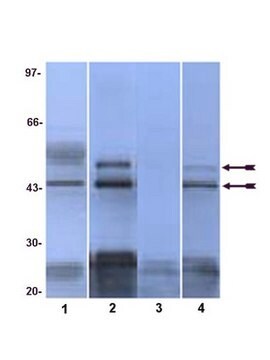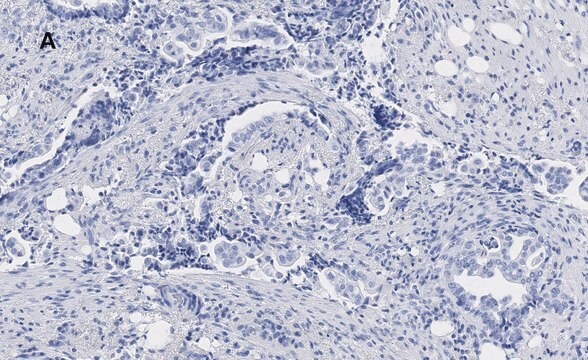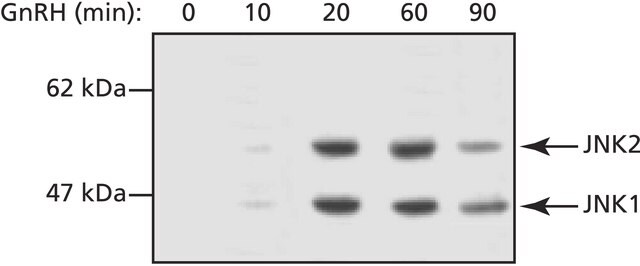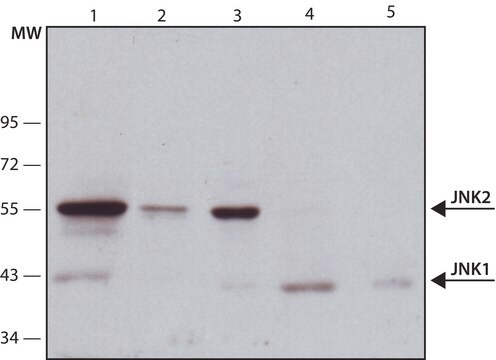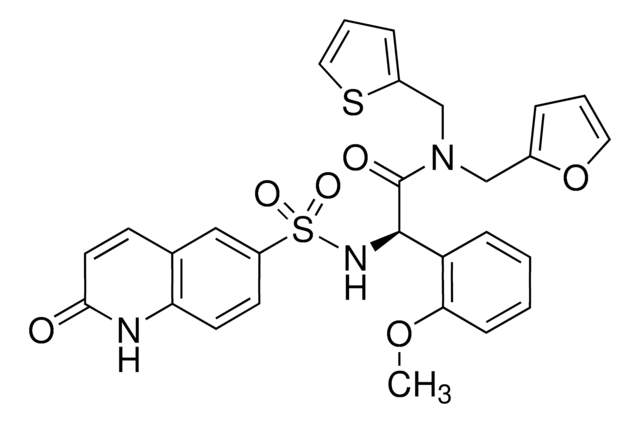Wichtige Dokumente
J4644
Anti-phospho-JNK1/2 (pThr183/pTyr185) antibody produced in rabbit
affinity isolated antibody, buffered aqueous glycerol solution
Synonym(e):
Anti-phospho-SAPK (pTpY183/185), Anti-phospho-Stress Activated Protein Kinase (pTpY183/185), Anti-phospho-c-Jun N-terminal Kinase 1/2 (pTpY183/185)
About This Item
Empfohlene Produkte
Biologische Quelle
rabbit
Qualitätsniveau
Konjugat
unconjugated
Antikörperform
affinity isolated antibody
Antikörper-Produkttyp
primary antibodies
Klon
polyclonal
Form
buffered aqueous glycerol solution
Speziesreaktivität
rat, human
Methode(n)
immunocytochemistry: 1:250
immunofluorescence: 1:250
immunohistochemistry: Assay Dependent
western blot: 1:200-1:2000 (using human 293 cells treated with UV radiation)
UniProt-Hinterlegungsnummer
Versandbedingung
wet ice
Lagertemp.
−20°C
Angaben zum Gen
human ... MAPK8(5599)
Verwandte Kategorien
Allgemeine Beschreibung
Immunogen
Anwendung
Biochem./physiol. Wirkung
Anti-phospho-JNK1/2 (SAPK) (pThr183/pTyr185 ) specifically recognizes the endogenous, active forms of JNK1 and 2 phosphorylated at threonine 183 and tyrosine 185.
Physikalische Form
Haftungsausschluss
Sie haben nicht das passende Produkt gefunden?
Probieren Sie unser Produkt-Auswahlhilfe. aus.
Empfehlung
Lagerklassenschlüssel
10 - Combustible liquids
WGK
WGK 3
Flammpunkt (°F)
Not applicable
Flammpunkt (°C)
Not applicable
Hier finden Sie alle aktuellen Versionen:
Besitzen Sie dieses Produkt bereits?
In der Dokumentenbibliothek finden Sie die Dokumentation zu den Produkten, die Sie kürzlich erworben haben.
Unser Team von Wissenschaftlern verfügt über Erfahrung in allen Forschungsbereichen einschließlich Life Science, Materialwissenschaften, chemischer Synthese, Chromatographie, Analytik und vielen mehr..
Setzen Sie sich mit dem technischen Dienst in Verbindung.